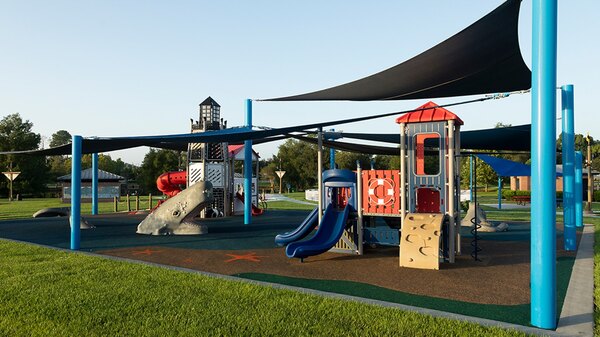Beyond Companionship: Unveiling 3 Life-Enhancing Benefits of Pet Ownership for Kids
While pets are a lot of work, they provide so much joy for the whole family. Having a furry, scaly, or feathered friend offers many benefits for children. The type of pet you decide upon is a big decision for sure, but well worth it everyone in your home. Here are five that could change your child’s life for the better.
1. Comfort
Kids have big feelings, and it can be hard to communicate them with adults. At the same time, it’s easy for even the best parent or caregiver to sometimes dismiss those emotions’ physical and mental impact. A pet can fill the void left when humans can’t meet your child’s needs by letting them pet, snuggle or play with them.
Animals are also excellent listeners. They don’t judge us, which is helpful when kids face frustrating or embarrassing situations. Kids can vent their thoughts and feelings to their pets. They can share their secrets and ideas that they aren’t yet uncomfortable sharing with friends or adults. In this way, they act in place of stuffed animals but can respond with their warmth, friendly licks and vibrant personalities.
Many animals can instinctively tell when we’re in distress and provide healing comfort. Dogs and other mammals can get protective and give emotional support from their owners and others.
2. Responsibility
Teaching kids responsibility when they’re young plays a vital role in how they adjust to adulthood. Playing a role in their pets’ care is a great way to introduce responsibility.
Feeding, bathing, brushing and cleaning up after pets are some of the tasks your kids can take on, depending on their age and development. Domestic animals rely on humans to meet their needs and teaching this to your child at a young age can help instill a sense of empathy and selflessness. Animals have different needs, which can segway into teaching about the different abilities and needs of humans.
Kids love their pets, which can serve as a motivator for them to accept the responsibilities. Getting used to following through in other areas such as school and their hobbies.
3. Life Lessons
Things aren’t always easy with pets. They can get sick, have behavioral challenges, and will eventually pass away. These are hard lessons, but that doesn’t mean the pet ownership experience isn’t worth having. Understanding this can build resilience in young ones and provide opportunities to broach hard topics while you’re there to guide them through.
Life has many joys and curveballs, and animals can help kids understand them. Through birth, teaching, care, aging and death, pets can help children learn hard truths in a way that still gives them the joy of connecting with them.
Some caregivers think that replacing a goldfish or hamster when they pass away so their child doesn’t know. However, research shows the long-term benefits of letting your child grieve their loss. Plus, if your child discovers the deception, it could create distrust.
Tips for Getting Your Child a Pet
Animals need you to commit to loving and caring for them. You can’t discard them when things get hard. If you want to adopt or purchase a pet for your child, there are some steps you can take to create the best experience possible.
Give Them Prior Experience Around the Species
If your child expresses interest in a specific pet, don’t rush out to get it before letting your child spend time around another one. Expose them to dogs, cats, guinea pigs, snakes, birds or any other animal before bringing one home to keep. Your kid might have a different reaction than either of you expect.
Know the Expenses
The cost of pets can add up and knowing you can afford them is vital. While adoption and purchase fees vary, you can expect to pay tens of thousands of dollars for a pet who lives several years.
You’ll need equipment, food, training, vet costs, habitats and stimulation through toys and treats. A low-maintenance pet is best if you want to spend less, but it’s essential to speak with someone with experience with an animal to get an idea of the total cost.
Consider the Future
A pet might suit your family’s current lifestyle, but what about in 10,15 or 20 more years? Some pets have a lengthy life span, and you’ll need to consider whether you can care for them a decade down the line. If you want to travel a lot, move to the city or change to a busier career, a high-maintenance or long-living pet probably isn’t best.
Gauge Their Commitment
Kids aren’t capable of taking care of everything when it comes to pets. You’ll likely be as or more hands-on than them. However, if you want your child to participate, it’s best to determine their likelihood.
Giving your child small responsibilities can help you decide whether or not they’re at a point where getting a pet will benefit them. A regular chore or completing their homework with minimal supervision are minor tasks. If your child is too young or needs to practice handling routines, waiting might be good.
Make It Exciting
Children grow to mirror their parents in different situations. Even if you’re not thrilled with the pet you get, staying positive and excited about them can enhance your child’s experience. They’re not just animals. Big or small, they’re part of your family and will likely be their best friend. A positive attitude can make a big difference and improve the quality of everyone’s life with a new pet.
Embracing the Benefits of Pet Ownership for Your Child
Pets have so much love to give and kids are often more than willing to respond to that love. Having one can teach them about life and provide a healthy emotional outlet. The lessons they learn through pet ownership will remain as they grow.
About the Author
 Ava Roman (she/her) is the Managing Editor of Revivalist, a women’s lifestyle magazine that empowers women to live their most authentic life. When Ava is not writing you’ll find her in a yoga class, advocating for her children or whipping up something delicious in the kitchen!
Ava Roman (she/her) is the Managing Editor of Revivalist, a women’s lifestyle magazine that empowers women to live their most authentic life. When Ava is not writing you’ll find her in a yoga class, advocating for her children or whipping up something delicious in the kitchen!











